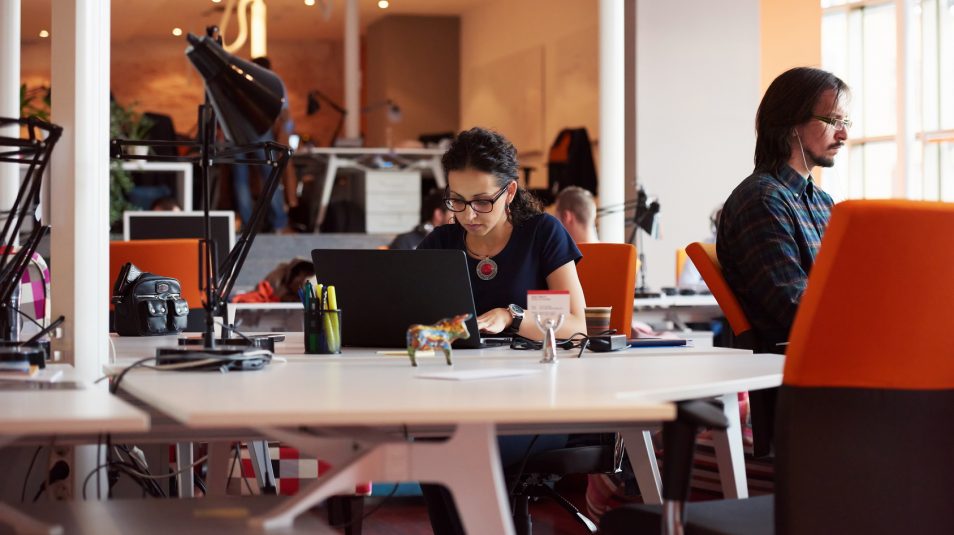Create an Adaptable Workforce to Ensure Your Company’s Longevity

Leadership
February 22, 2017
Hollis Thomases
Founder of ReinventionWorks
Topics
Adaptability, LeadershipAdaptability is not an inborn trait; it’s a skill people learn, typically over time and through the “school of hard knocks.” The skill of adaptability requires mastery of many facets: attitude, resilience, creativity, ingenuity, the minimization of fear, above-average willingness to take risks that could lead to failure, and the ability to anticipate what lies ahead, to only name a few. According to PCW’s 20th CEO Survey, adaptability is also one of the most in-demand skills that organizations cannot replace by machines and for which they find hardest to recruit.
Why is adaptability in demand? Because we all now live and work in fast-changing and ever-accelerating times. Because the jobs of yesterday and today will not likely all exist tomorrow. And because companies themselves continue to feel the pressures of all sorts of disruptive forces: competition, more fickle consumers, the adoption of technology, the beating drum of demanding investors. Today, no person or organization is immune to the need for adaptability.
Yet, since adaptability is not part of a common education curriculum, employers today face a dilemma: hire for other necessary skills and experience and hope that they get an adaptable worker along with it, or educate and train their workforce in adaptability skills. Since the former has already proven daunting, ought not the latter be a necessity?
6 Ways Adaptability Helps Ensure Company Longevity
If a company plans to invest in adaptability training, it will also want to know what its return on investment will be. The primary benefit will be to ensure a longer and healthier life for that company, and here’s how:
- Retention of talent; slough-off dead weight – A company that truly embraces an adaptable workforce gains because it recognizes that adaptable employees may seek new challenges to keep themselves stimulated and engaged at work. This could mean that an employee wants to move inter-departmentally or becomes intrigued about posted job opportunities outside their current skill sets. If the company encourages – or at the very least supports – this kind of lateral development and thinking, rather than looking outside the company for advancement or fulfillment, the company can more easily retain and help re-train valuable employees. The adaptable employee will likely be able to learn new job skills faster and juggle requirements of two jobs as they transition out of one and into the next. Similarly, in such a culture, less adaptable, more inflexible employees will become more obvious and will either self-select out and leave that company or the company can choose to replace them altogether.
- Multi-generational workforce coping skills – People with adaptability skills tend to be more open and willing to accommodate the circumstances they find themselves in. Multi-generational workforces demand the kind of fast-learning and give-and-take commonly found among adaptable individuals.
- Better developed leaders – A leader with strong adaptability skills often positively reinforces, by mere example, how being adaptable creates better outcomes for her team, her department, and her company. Individuals taught adaptability can also become better leaders than leaders without this skill.
- Incubates innovative thinking – Adaptable individuals have the ability to forward-gaze; thinking several steps ahead enables them to zig while everyone else zags. This attribute of adaptability can also lead to innovative thinking and creative problem solving. That next great idea might just be a company’s new best-selling product or pivot that saves the company from an upstart competitor.
- Enables faster product and company reinvention – In a company where more people are adaptable, change of any kind can be more easily instituted.
- Change doesn’t have to be so costly – Finally, though change is inevitable, determining how to change and implementing it at the corporate level can be both expensive and crushingly difficult. Adaptability skills can help minimize these challenging downsides to change.
Wondering when the best time to start building an adaptable workforce would be? I say, the minute a new hire comes on-board.






I totally agree! Adaptability is in-demand nowadays. It even surpassed discipline in the process. You are right, work is fast-changing and ever-accelerating, only those who have great adaptability skills respond well to changes. In addition to your primary benefits, a workplace that values adaptability outperforms other organizations – it is more likely to thrive on different organizational problems delivering positive results and better productivity.
Thanks for weighing-in, Brooke. I like and find interesting how you state, “…more likely to thrive on different organizational problems.” When I pause and think about it, I can’t really say I can cite many organizations that actually THRIVE on its own problems, so when you put it in the context of adaptability, I can see the actuality of that — great point!
Valuable blog post!!
I really appreciate your efforts put this blog post. It’s interesting for reading. Thank you!!